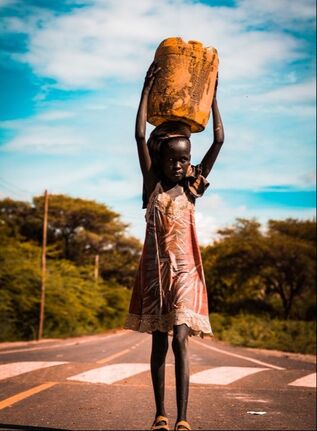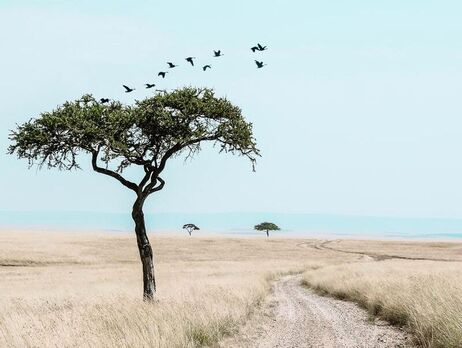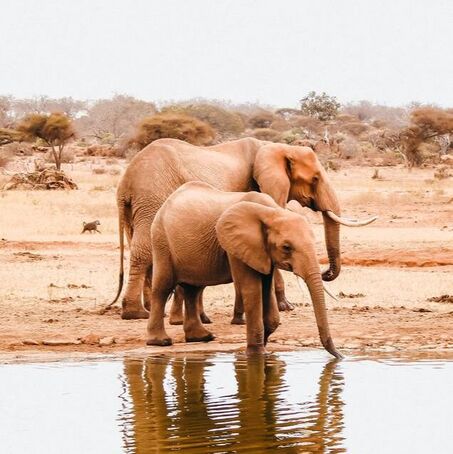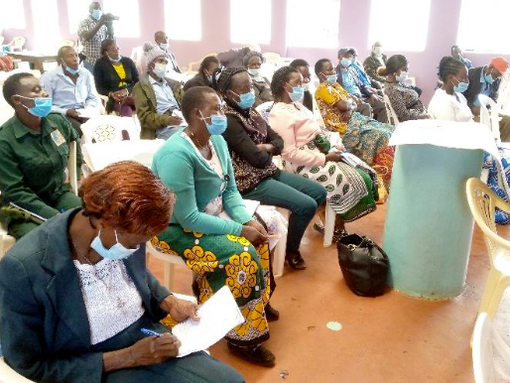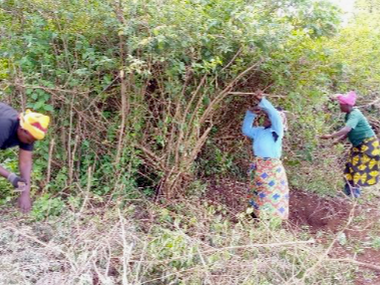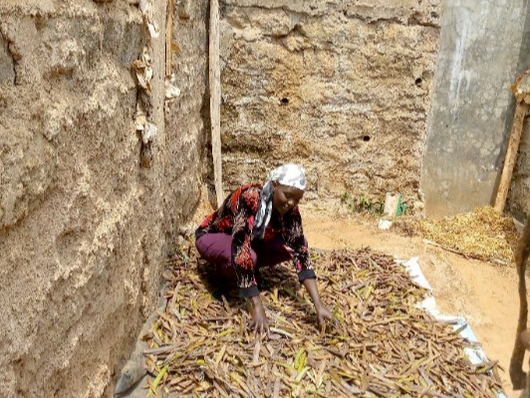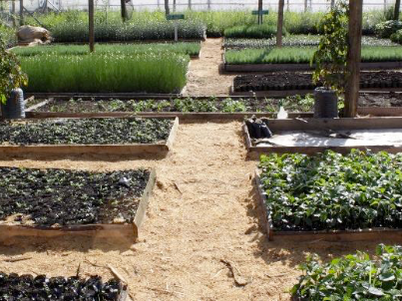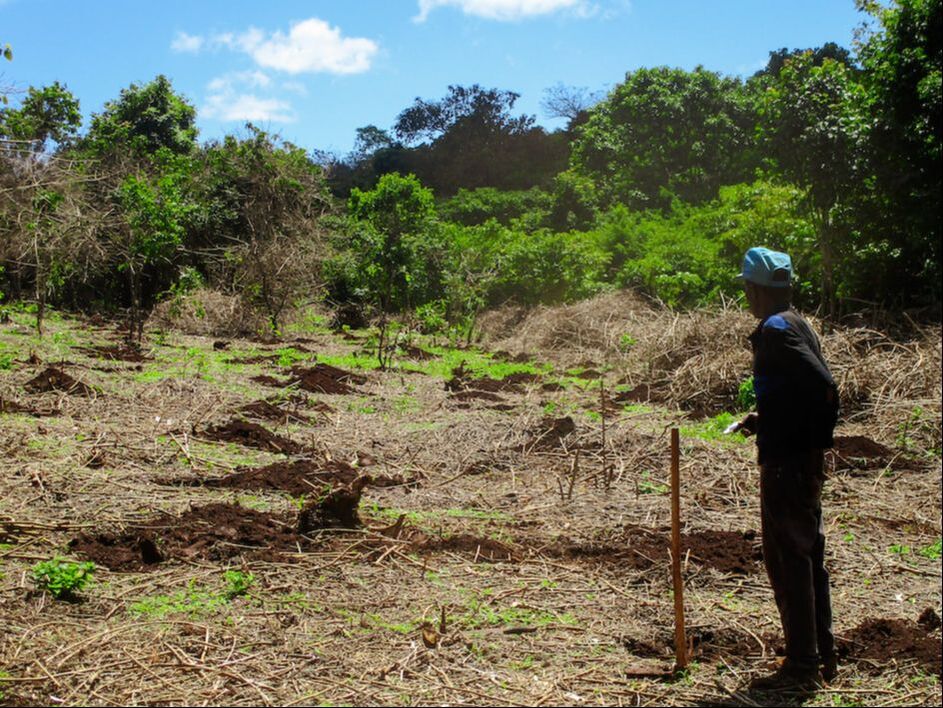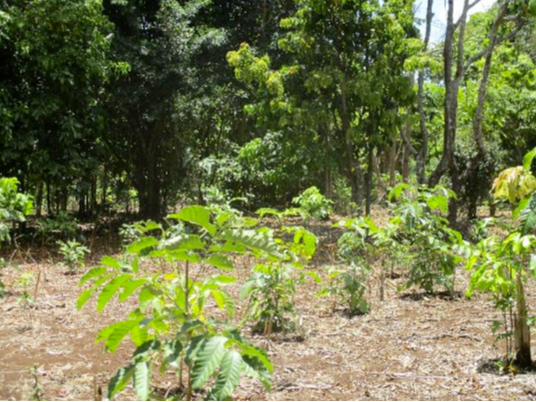“I have seen people in tears,” recalls Elizabeth Njenga, who works at the The Kenya Tea Development Agency. “They simply do not know what impact the lack of rain is going to have.”
There’s simply not enough water in Kenya. There’s not enough water for agriculture and there’s not enough water for people either. In some regions, it hasn’t rained a single drop in the last two years.
There’s simply not enough water in Kenya. There’s not enough water for agriculture and there’s not enough water for people either. In some regions, it hasn’t rained a single drop in the last two years.
|
In Europe, 95 out of 100 people enjoy access to piped water – we forget how lucky we are.
In Africa, a shocking 90 out of 100 don’t have access to water! In fact, of the 25 nations in the world with the greatest percentage of people lacking access to safe drinking water, 19 are in Africa! Climate change, agricultural expansion, timber harvesting, illegal logging, industrial growth, charcoal production bad farming practices…the list goes on. Human activities have led to massive deforestation and driven Kenya to the brink of ecological collapse. |
|
Kenya is the least forested country in Africa, with only 7% of the country having tree cover.
Gordon Okumu, a student at the University of Oregon, has returned every December to his hometown in Kenya since moving to the States in 2016. On each trip he has seen fewer and fewer trees. “The place where I grew up was much more a forest,” Okumu says. “Today it is much more of an open land.” |
Forests are rain making machines! Unhealthy forests and fewer trees result in less transpiration, less condensation, and, as a result, less rain. Bad news for Kenya, where 70% of the population work in farming which brings in 25% of the country’s annual GDP. On the ground, the reality means prolonged drought, such as in Marsabit county where the situation is desperate and people are walking 40 kilometers to find water, food and pasture.
|
As well as creating rain, trees can control the distribution, availability, quality and storage of water – providing resilience during dry seasons. Deforestation on the other hand, leads to soil compaction and hardening, desertification, soil erosion, reduced infiltration, increased runoff, and flooding. |
Climate change, deforestation and population growth add up to a perpetual water shortage - and also ecological degradation. For example, Upper Imenti Forest in Kenya which has been deforested over many decades, sustains fewer trees and less wildlife than ever before. Among other things, the area should function as an important wet-season elephant habitat and refuge.
|
Not only bad for elephants. Kenya is known for its rich natural biodiversity. Mount Kenya alone is home to 778 plant species and iconic animals like the leopard, mongoose, and endangered black rhino. It is one of the last few east African homes for the bongo (a forest antelope), along with giant forest hogs, black-fronted duikers and mole shrews. Its cherished birds include rare kinds of starlings, ibis, and the endangered Sharpe’s longclaw.
Yet, the health of forests that are still standing are continuing to be destroyed by burning, fragmentation and loss of ecologically critical wildlife species. |
So what now?
- We need to change the narrative, change the land, piece by piece, farm by farm, tree by tree.
- Soil and water conservation are both vital. Sadly they are at an all-time low; agricultural production is falling and forest cover is shrinking.
- Smart reforestation means planting the right trees in the right places. Using indigenous tree species and taking into account climate, method, spacing and care all play a major role.
What we’re doing about it!
In Kenya, the forested mountains are known as water towers. They play a critical role in collecting and storing rainfall. Trees with higher elevations can actually capture water from the fog and clouds by drawing the moisture out of the atmosphere. So this is an area we were keen to focus on!
Mount Kenya is the second highest peak in Africa and its Forest Reserve is an important water catchment area as it feeds into various rivers, including Tana River (Kenya’s longest river) which provides water for 95% of Nairobi residents and generates half of Kenya’s electricity through hydropower.
In Kenya, the forested mountains are known as water towers. They play a critical role in collecting and storing rainfall. Trees with higher elevations can actually capture water from the fog and clouds by drawing the moisture out of the atmosphere. So this is an area we were keen to focus on!
Mount Kenya is the second highest peak in Africa and its Forest Reserve is an important water catchment area as it feeds into various rivers, including Tana River (Kenya’s longest river) which provides water for 95% of Nairobi residents and generates half of Kenya’s electricity through hydropower.
Residents living in the Mount Kenya region also rely on local rivers for domestic and agricultural use (e.g. livestock and small-scale irrigation). However, deforestation in the area has led to a reduction in the quality and quantity of water for downstream users, as well as an increase in sedimentation.
JUST ONE Tree has partnered with International Tree Foundation to help restore Lower and Upper Imenti Forests. Located in Meru county, they form part of The Mount Kenya National Park and Reserve, supporting huge biodiversity and habitat for many endemic species.
The project’s mission is to promote tree planting, restoration, protection and sustainable use of the forests’ ecosystems in partnership with local communities. This will enhance both the social and economic well-being of the communities living adjacent to the forest, whilst helping to improve their water supplies. And of course expanding wildlife habitat and restoring biodiversity in the way that nature intended.
Read more here: Where we plant - Kenya
Another of our favourite projects in Kenya, one close to our hearts, is our Kenyan Schools’ Project.
With the help of our on the ground partners ITF and Globe Gone Green, we’re bringing environmental education to life for children near Nairobi and Mount Kenya, by reforesting their school grounds and combatting climate change in the process.
Read more here: Acacias in the playground
Another of our favourite projects in Kenya, one close to our hearts, is our Kenyan Schools’ Project.
With the help of our on the ground partners ITF and Globe Gone Green, we’re bringing environmental education to life for children near Nairobi and Mount Kenya, by reforesting their school grounds and combatting climate change in the process.
Read more here: Acacias in the playground

